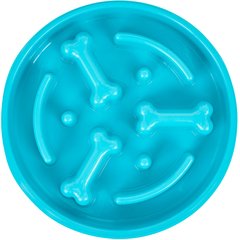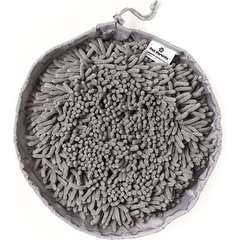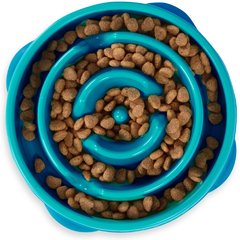Otterhound
LourdesPhotography/iStock / Getty Images Plus via Getty Images
The Otterhound is an energetic and loving dog originally bred for hunting otters. As such, these powerful dogs can swim a long distance to capture their prey. They also have long and shaggy waterproof fur and webbing between their toes that helps them swim with ease.
An Otterhound’s size falls between 24 and 27 inches, and the dogs weigh 80–115 pounds.
Caring for an Otterhound
Otterhounds have a kind temperament, which makes them a great family dog.
However, due to their boisterous nature, Otterhound dogs need training so they learn not to jump up and accidentally knock people over—including small children. During training sessions, Otterhound puppies are eager to please and learn quickly when given high-reward dog treats.
Brushing is needed twice weekly to prevent this longhaired dog’s fur from matting and to remove any debris in their hair.
Otterhound Health Issues
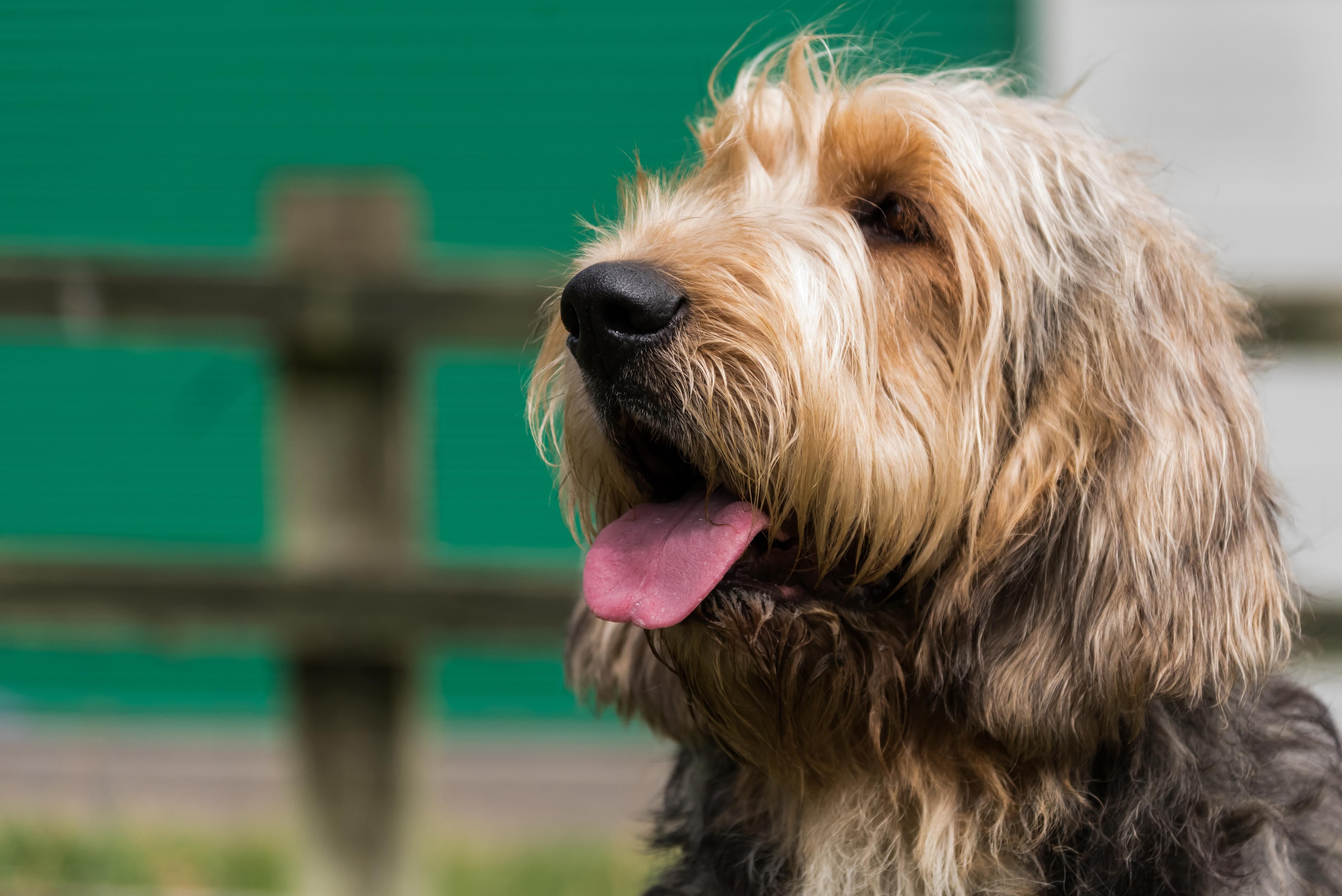
The Otterhound is a generally healthy dog breed with an average lifespan of 10–13 years. That said, the Otterhound dog breed is predisposed to the following health issues:
Bloat and Gastric Dilatation-Volvulus (GDV)
Large dogs with deep chests, such as the Otterhound, are prone to bloat. During bloat, a dog’s stomach fills with gas and can suddenly make their abdomen look distended.
Bloat can then develop into gastric dilatation-volvulus (GDV), when the stomach twists and cuts off blood to some internal organs. This is a painful and life-threatening condition that must be treated quickly.
Take your Otterhound to your nearest animal emergency hospital if you notice the following signs of bloat and GDV:
-
Pacing
-
Enlarged or distended abdomen
-
Vomiting up food or water soon after eating or drinking
A gastropexy procedure (where the stomach is secured to the abdomen wall) can reduce the risk of bloat and GDV in your Otterhound, and it’s often done at the same time as a dog’s spay or neuter surgery. Talk to your vet about whether a gastropexy is a good choice for your Otterhound puppy.
Hip Dysplasia
Hip dysplasia is an inherited condition where the head of the femur (thigh bone) does not fit snugly into the hip joint. As a result, the femur rubs against the hip socket, causing pain, inflammation, and arthritis within the joint.
Hip dysplasia can develop in one or both hip joints. Otterhound puppies can have congenital hip dysplasia (meaning they’re born with the condition), or the breed can be at risk for developing hip dysplasia during their senior years.
Identifying affected dogs through a PennHIP evaluation (a specialized pelvis X-ray) allows for early treatment. This can be done on puppies as young as 16 weeks old. Reputable Otterhound breeders will screen their breeding dogs to avoid passing the condition on to their puppies.
Treating hip dysplasia varies depending on severity. Management of this condition may include joint supplements, anti-inflammatory medication, weight control, and reduced activity levels. A dog may need surgery to correct hip dysplasia if their case is severe.
Primary Epilepsy
Primary epilepsy refers to seizure activity in dogs that may occur occasionally or often, with no identified underlying cause. Symptoms usually develop at an early age (1–4 years old) and may include:
-
Unconsciousness
-
Dilated pupils
-
Full-body tremors
-
Vocalization
-
Urination and/or defecation
Treatment involves one or more oral anti-seizure medications that must be given long-term to prevent seizures.
Glanzmann Thrombasthenia (GT)
Glanzmann thrombasthenia (GT) is a rare, inherited bleeding disorder that prevents blood clots from forming when an injury occurs.
Otterhounds with this rare genetic mutation can bleed excessively during any type of surgery or due to a minor injury. They can also bleed a lot when your dog is teething (when their adult teeth erupt through the gums).
Surgery should be avoided for dogs with this condition. But if a surgery is needed, blood products need to be on hand.
What To Feed an Otterhound
Otterhound puppies have rapid growth spurts and need to be fed a high-quality puppy formula designed for large breeds until they are 1 year old. Puppy food will provide the extra calories they need to grow.
Once they reach adulthood, your Otterhound’s diet needs to be slowly transitioned to a high-quality adult formula for large-breed dogs.
Make sure the dog food you choose meets the nutritional guidelines set by the Association of American Feed Control Officials (AAFCO). Foods that meet this standard will have an AAFCO statement on the packaging.
How To Feed an Otterhound
Otterhounds enjoy twice-daily feedings—one in the morning and one in the evening. They should be fed a diet based on their life stage: puppy, adult, or senior.
If you notice your dog gobbling down food, consider a slow-feeding device. This will regulate the amount of food your dog can eat at once and reduce risk for regurgitation, upset stomach, and GDV.
How Much Should You Feed an Otterhound?
Follow the feeding guidelines on your dog food packaging to learn how much to feed your dog. Your vet can give more specific instructions on the ideal feeding amount based on your dog’s health, age, and lifestyle.
As with all dogs, an Otterhound’s daily diet should consist of 90% dog food and only up to 10% treats.
Nutritional Tips for Otterhounds
Otterhounds will receive all essential nutrients in their AAFCO-approved dog food, so in many cases, dog-friendly nutritional supplements are not necessary.
However, because this breed is prone to hip dysplasia and arthritis as they age, your veterinarian may recommend starting your Otterhound on a joint supplement early in life to help slow or reduce joint issues.
Ask your veterinarian if a joint supplement is recommended for your dog, and never give your pup a supplement without speaking to a vet first.
Behavior and Training Tips for Otterhounds
Otterhound Personality and Temperament
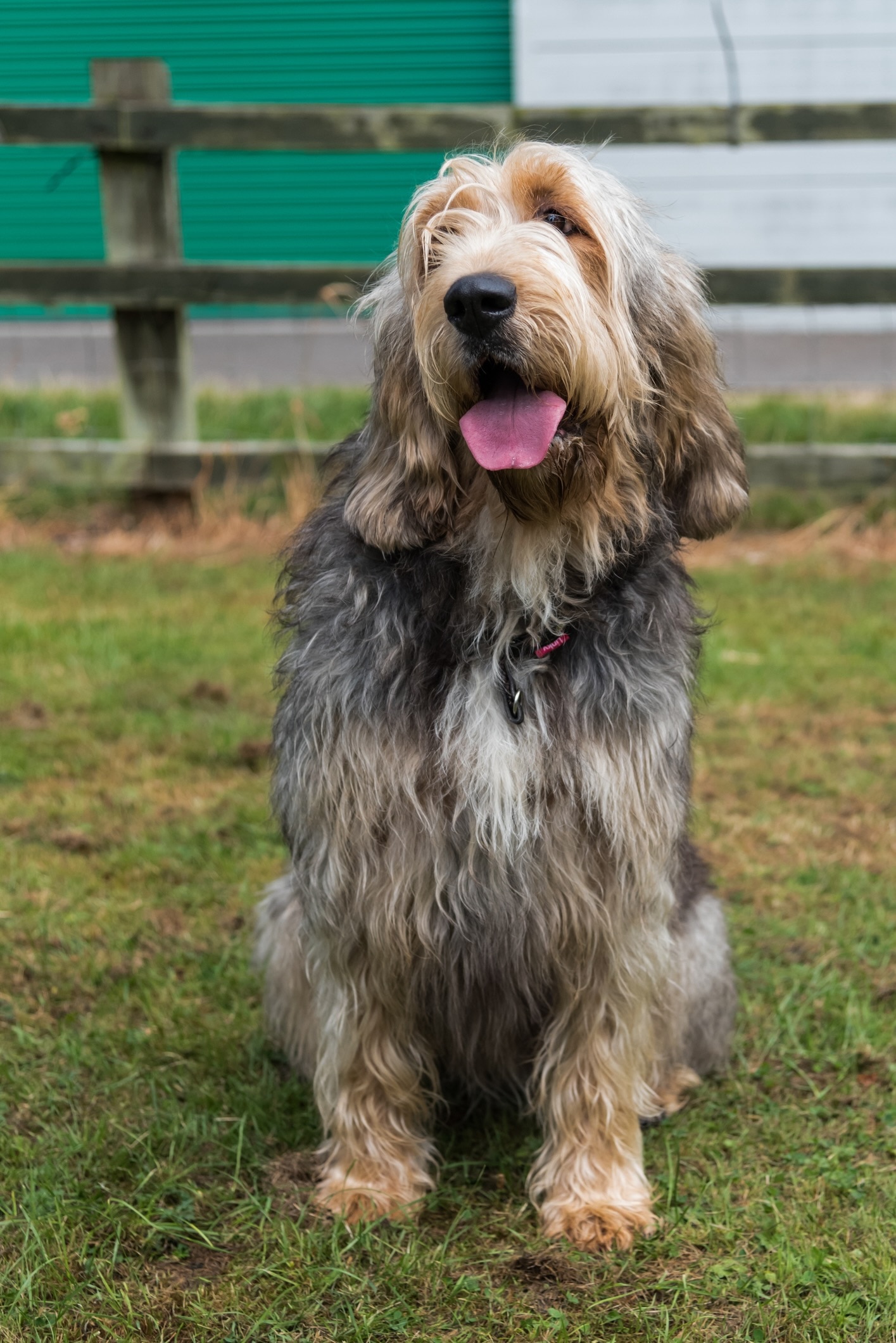
As friendly dogs, Otterhounds make great family companions. They can be lively as puppies, so they need exercise as an outlet to unleash their energy. They also need training to learn how to be calm around other pets and small children so they don’t knock them over with their large body.
Otterhounds can do well with other pets and children, as long as they are properly trained and socialized when they are puppies.
Otterhound Behavior
Otterhounds are very affectionate dogs. They love to be close to their family members and, according to the Otterhound Club of America (OCA), may try to wiggle their way into your lap—despite their large size.
When left alone for long periods, Otterhounds can develop separation anxiety. The OCA recommends that working pet parents have another dog at home to keep the social Otterhound company when no one is around. Otherwise, a bored and lonely Otterhound may bark, or “bay”—loudly and often.
As a scent hound, their powerful nose may lead them into trouble. To keep your dog safe, ensure they are kept inside a fenced area or on a leash when they are outside.
Otterhound Training
Otterhounds learn best with positive reinforcement training, and when they are given high-quality treats as a reward for following cues. Begin training your puppy as soon as you bring them home.
Socializing Otterhound puppies is also important. Despite the friendly Otterhound temperament, breed only accounts for about 9% of a dog’s behavior—meaning early exposure to new people, animals, and situations is vital for a puppy to grow into an accepting and confident dog.
Fun Activities for Otterhounds
-
Tracking
Otterhound Grooming Guide
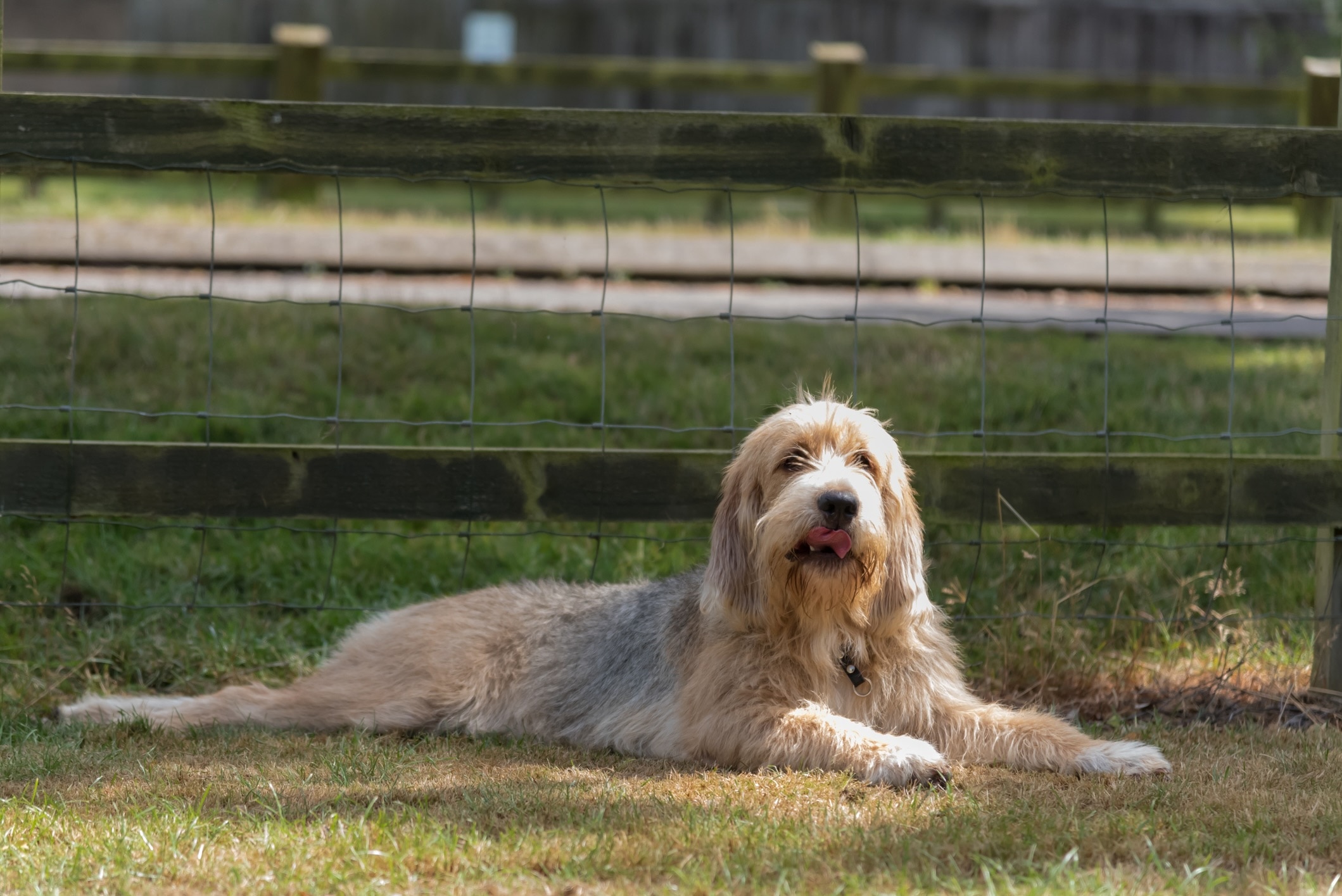
Otterhounds have a shaggy double coat made of medium-length rough hair. Their coat can come in a variety of colors with different markings, including black, black and tan, gray, blue and cream, and wheaten.
While Otterhounds don’t require professional grooming appointments, because of the length of their hair and their love for being outdoors, their coat does need to be brushed regularly to prevent matting and to remove any debris embedded within their coat.
Skin Care
Overall, an Otterhound doesn’t require special skin care. Regular baths aren’t necessary unless your Otterhound’s coat gets particularly dirty or smelly.
Talk to your vet if you notice changes in your dog’s skin, such as redness or flakiness, or if your Otterhound seems itchier than normal.
Because Otterhounds love being outside, keep your dog on a flea and tick preventative year-round.
Coat Care
An Otterhound’s coat sheds a moderate amount. Brushing your dog with a slicker brush once or twice a week is crucial to keeping their coat in tip-top shape. A comb can also be used to remove debris that has gotten tangled in their coat.
Otterhounds do not need a professional groomer, as their coat is best kept long for protection when they are outdoors, running through fields or swimming.
Eye Care
Otterhounds don’t typically require special eye care. Talk to your vet if you notice eye discharge, redness, or irritation.
Ear Care
Otterhounds can develop ear infections, especially because they love to swim and have floppy ears that can trap moisture.
To minimize the risk of ear infections, it’s best to clean their ears with a vet-recommended ear cleaning product that contains a drying agent (such as Epi-Otic® Advanced) every two to three weeks for maintenance, plus after swimming or bathing.
Signs of an ear infection include a foul odor, head-shaking, or discharge from the ear. Talk to your vet if you see any of these symptoms in your Otterhound.
Considerations for Pet Parents
Otterhounds are one of the rarest dog breeds in the world, so finding one to bring home may be a challenge. The OCA has a list of vetted Otterhound breeders you can contact.
The perfect home for an Otterhound has a large, fenced backyard. They might not make the best dogs for an apartment, townhouse, or home with close-by neighbors because of the dogs’ loud baying.
This is an active breed that requires at least two hours of exercise every day, so Otterhound dogs need to be with people who can take them on long walks, hikes, or swimming for mental and physical stimulation.
Otterhounds also need to be properly trained at an early age so they are well-behaved around children, people, and other pets. Puppy training classes, socialization classes, and obedience training classes are important in raising a calm and well-mannered Otterhound.
This breed sheds a moderate amount, and their fur can get matted and trap debris, such as sticks and leaves. An Otterhound needs to be brushed once or twice weekly to keep their coat in pristine condition.
Otterhound FAQs
Are Otterhounds good pets?
Yes, Otterhounds are very affectionate and intelligent dogs that make excellent family pets if trained properly when young.
Why are Otterhounds so rare?
Otterhounds were originally bred to hunt otters—an activity that no longer exists due to the near-extinction of river otters. This has made the breed rare because hunters no longer need dogs for this sport.
How much do Otterhounds cost?
Because this breed is rare, an Otterhound puppy can cost $2,500–$5,000 depending on the dog’s pedigree.
Do Otterhounds like water?
Yes, Otterhounds are expert swimmers that are equipped with webbed toes and a waterproof coat to help them glide through water with ease.

